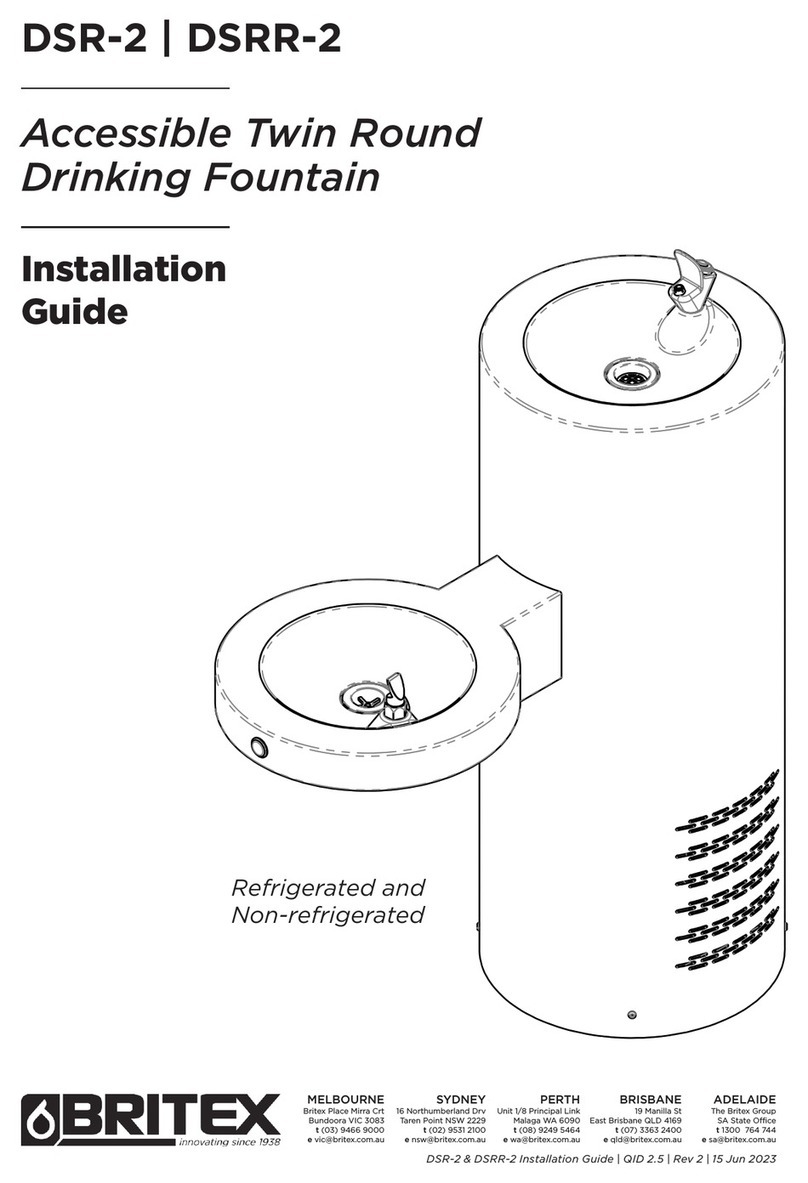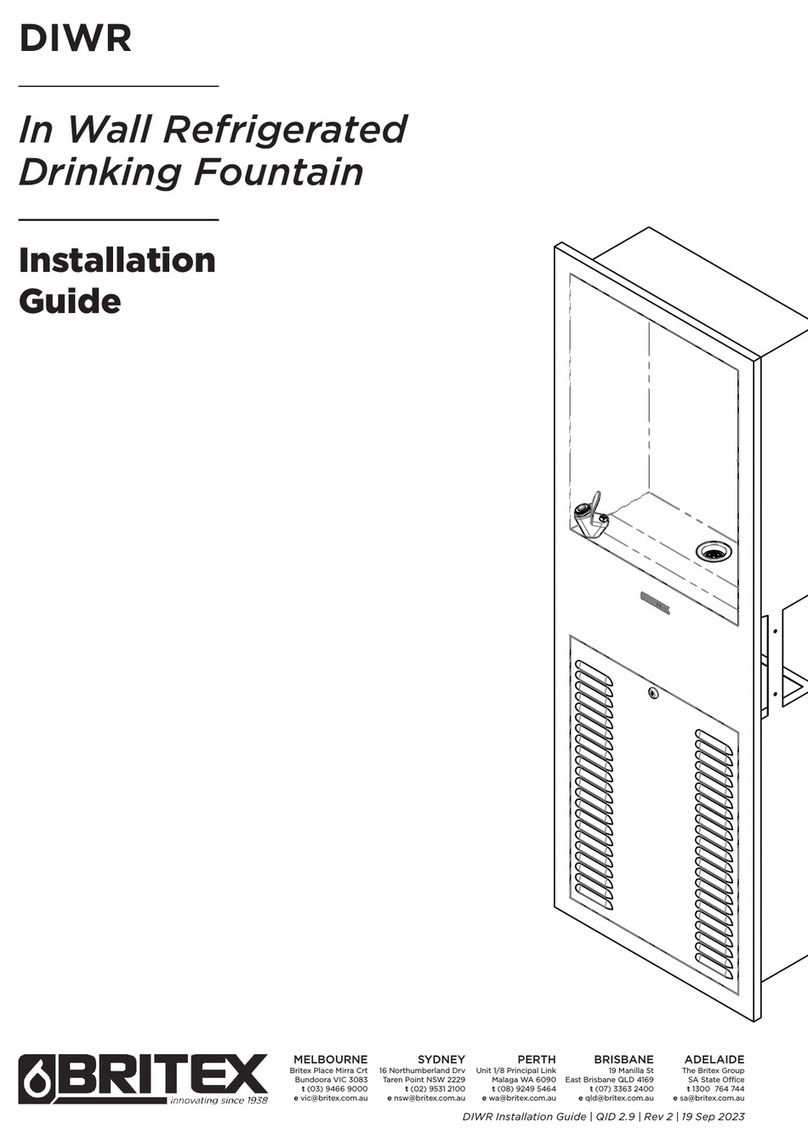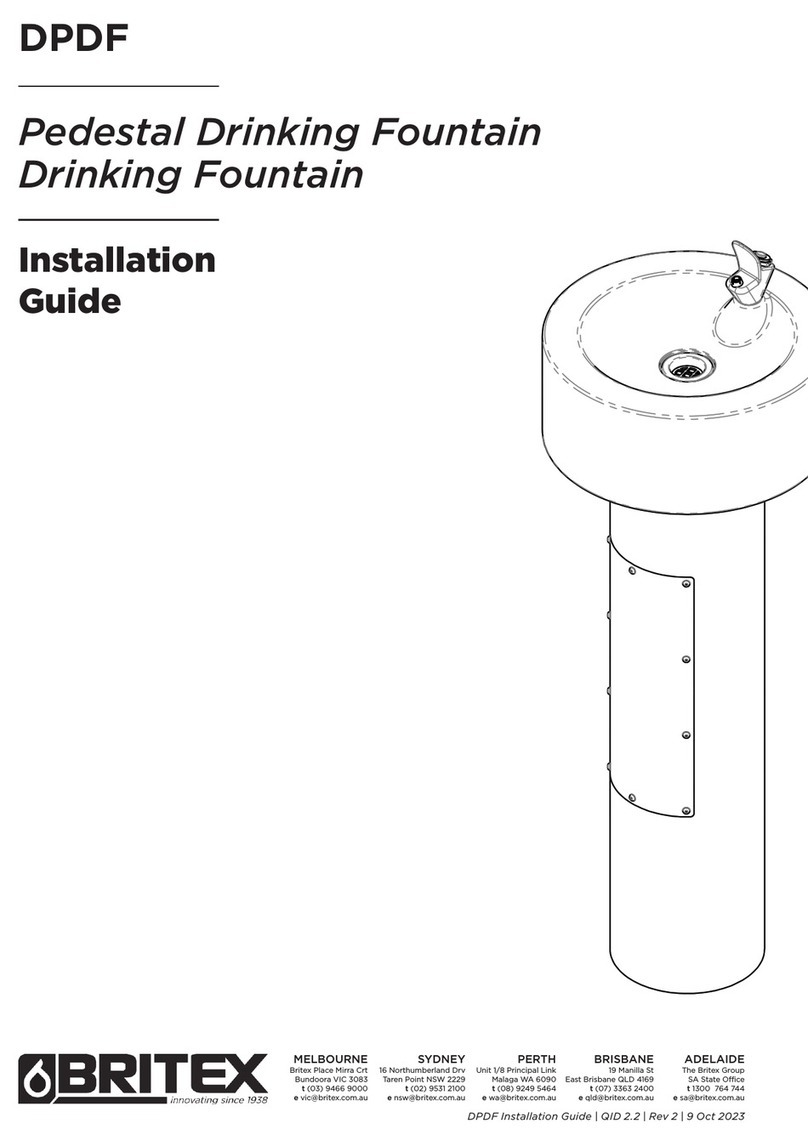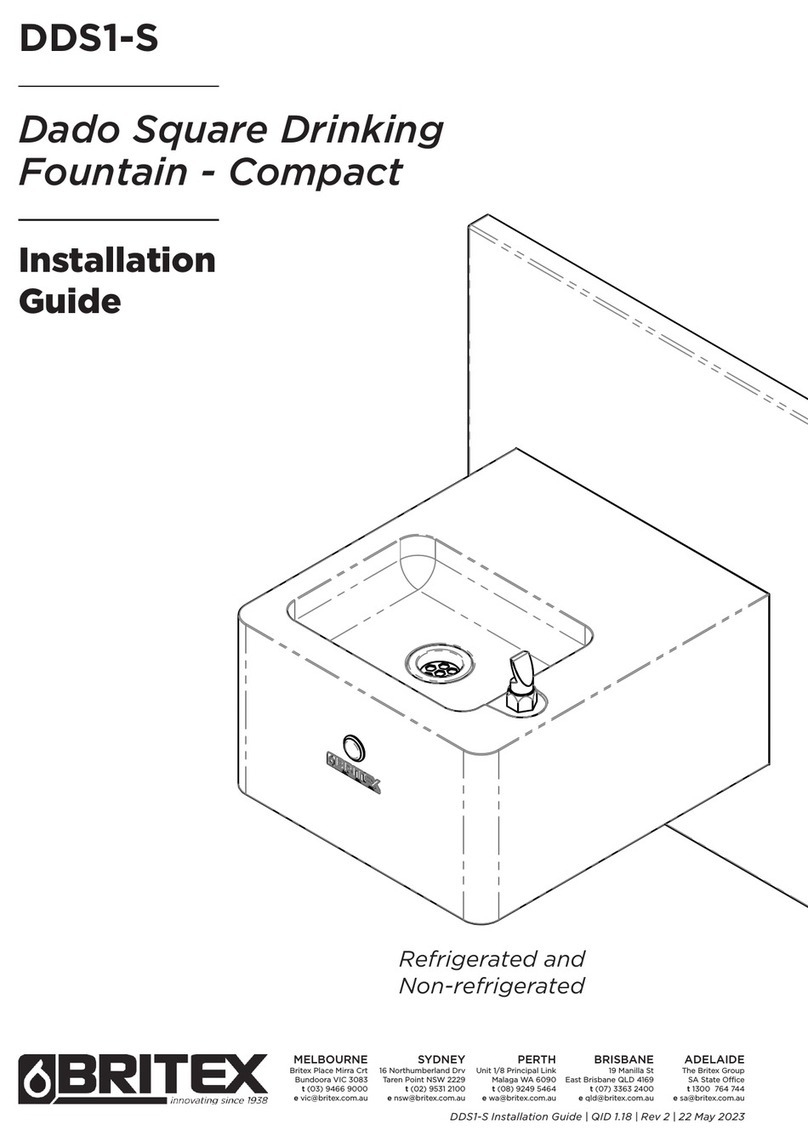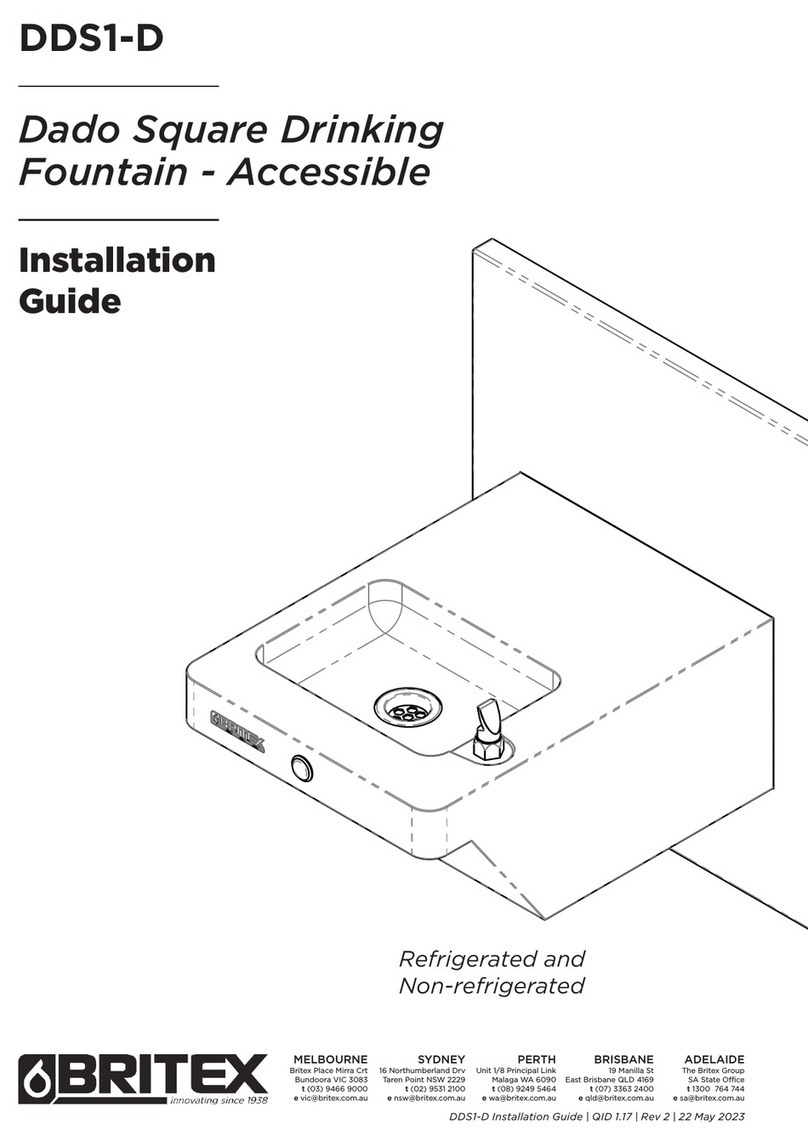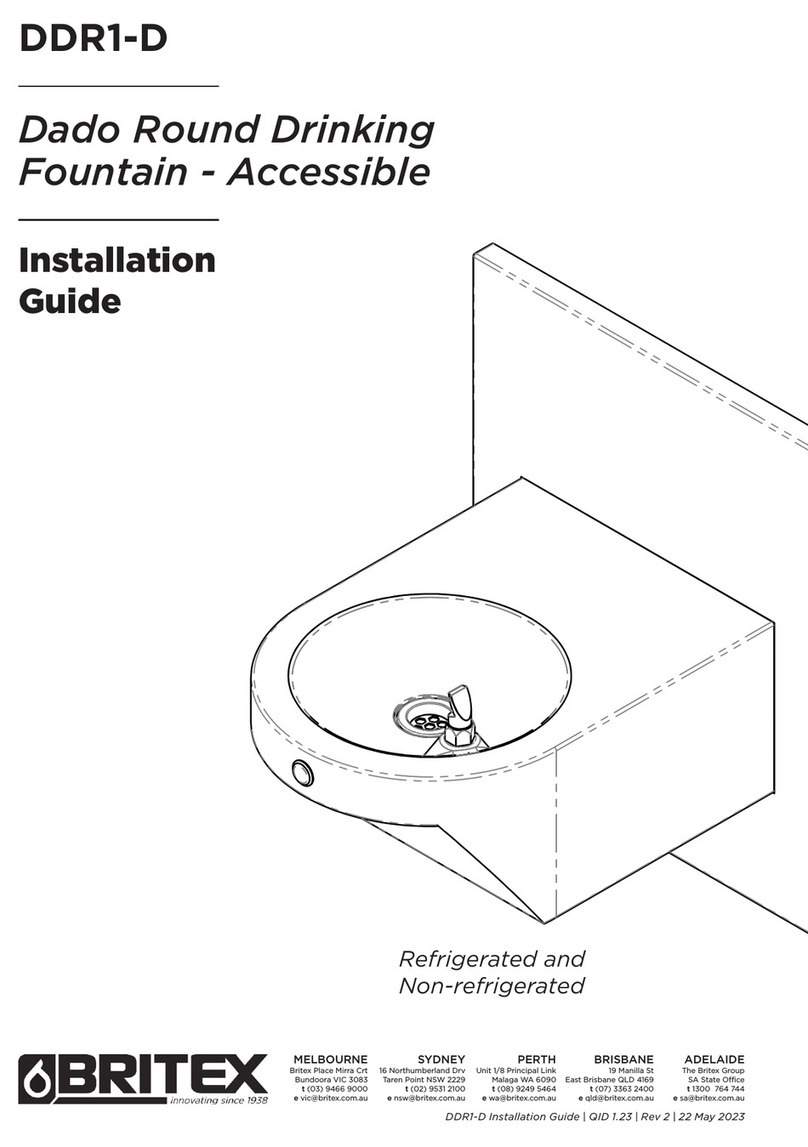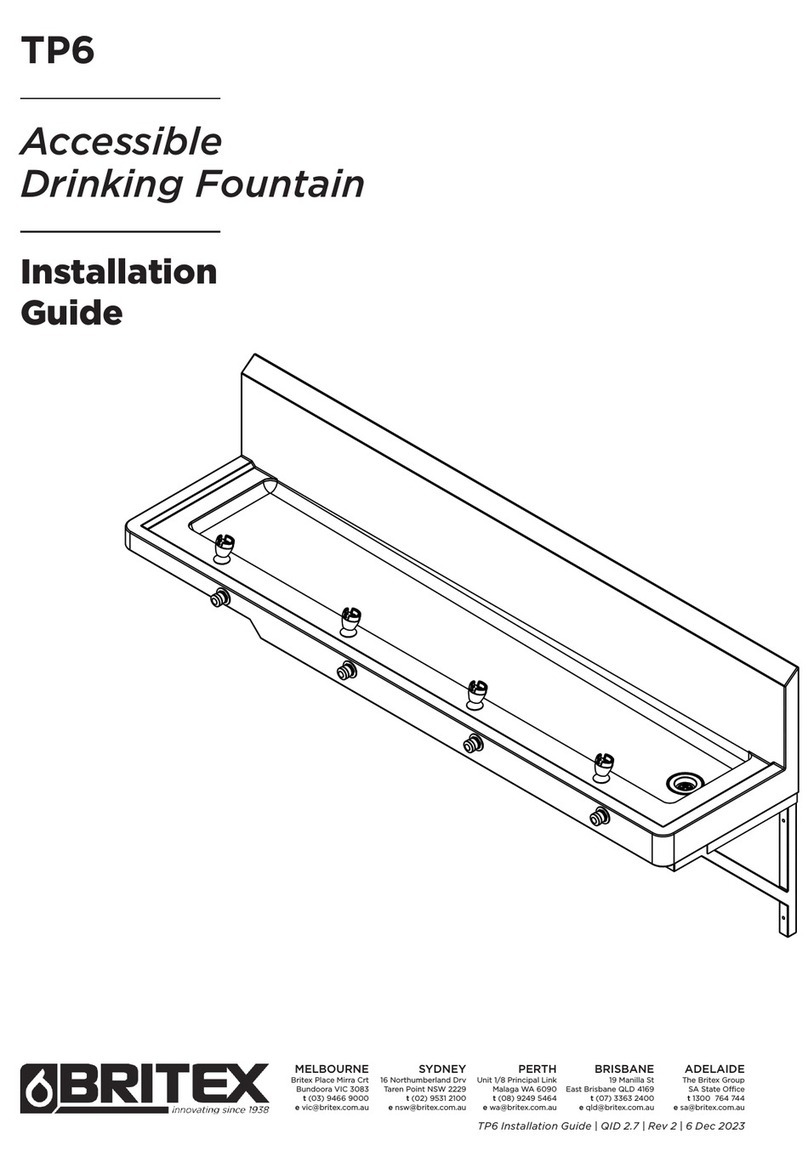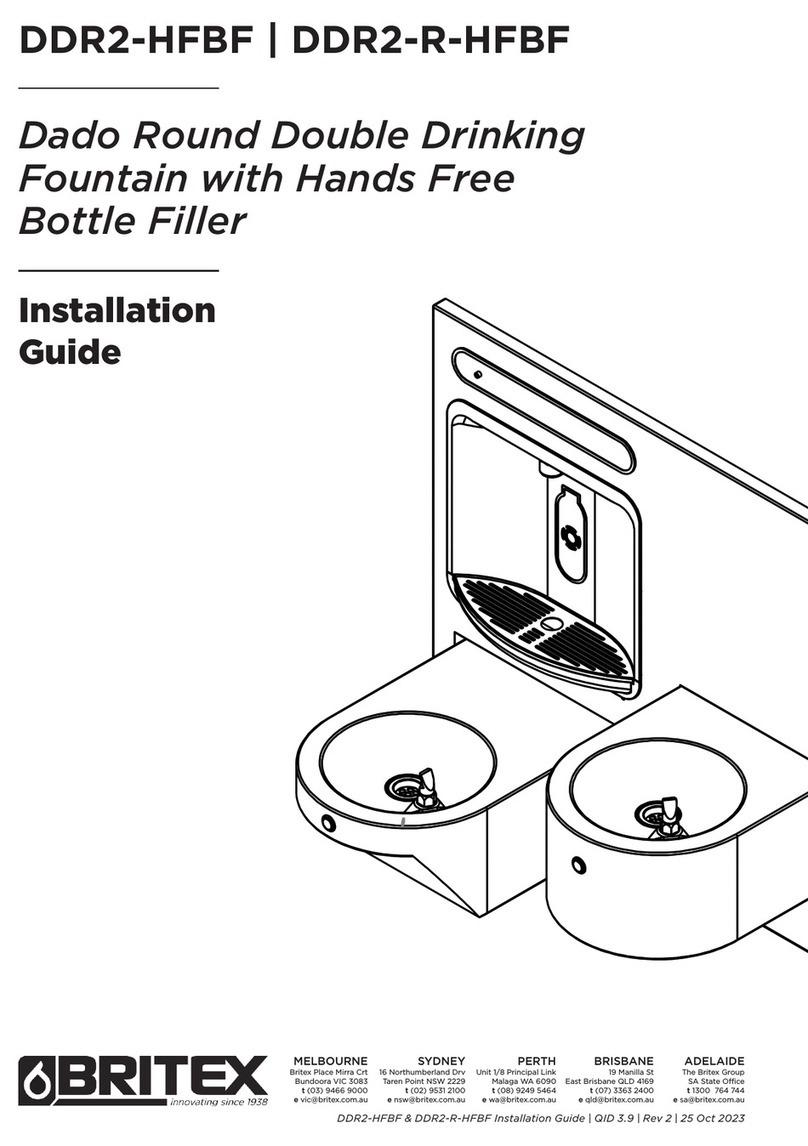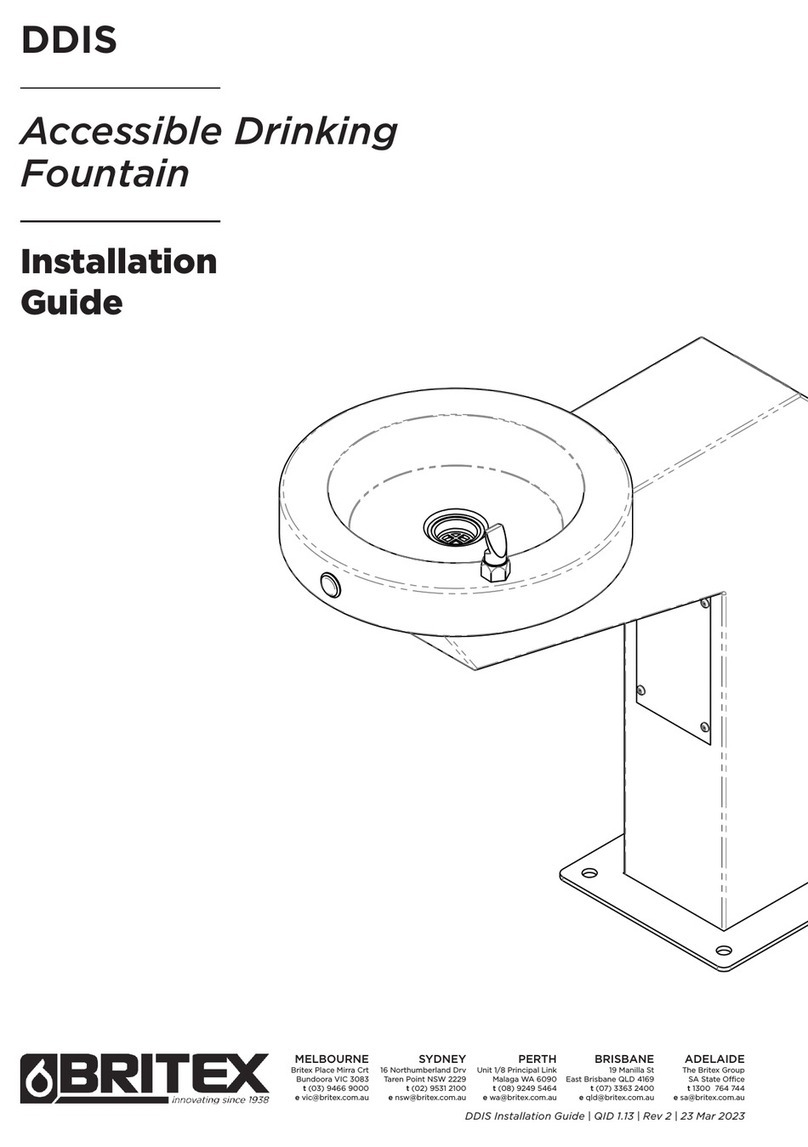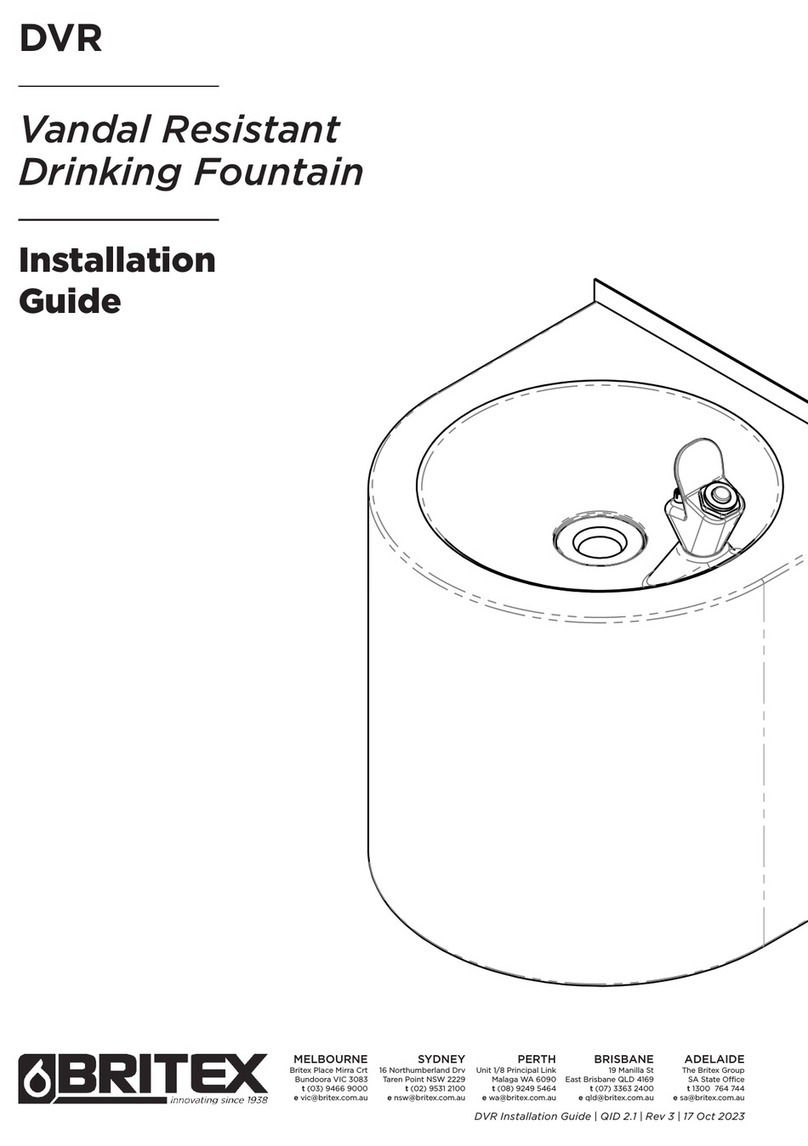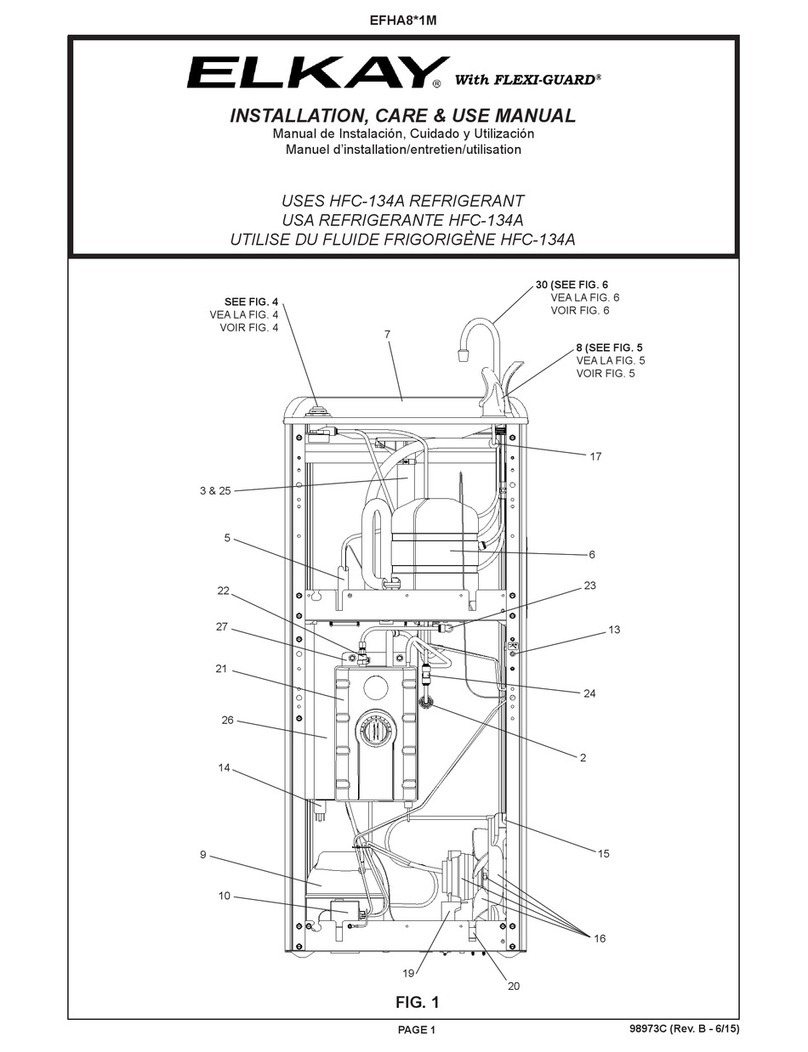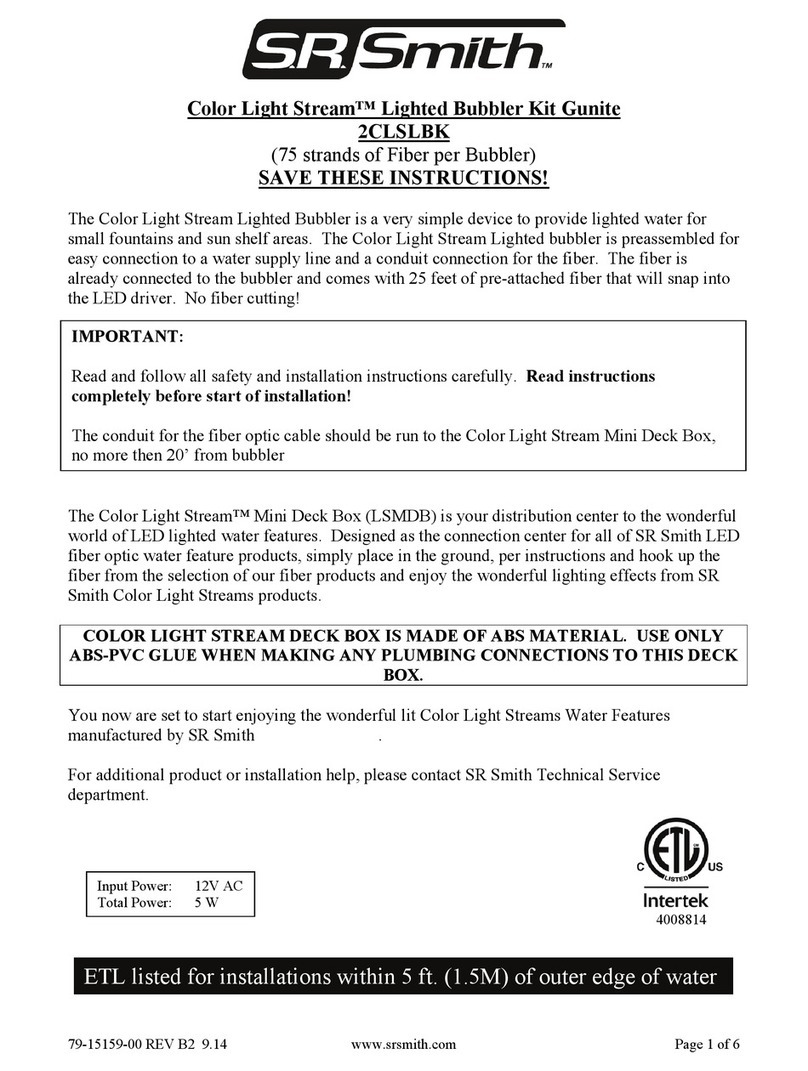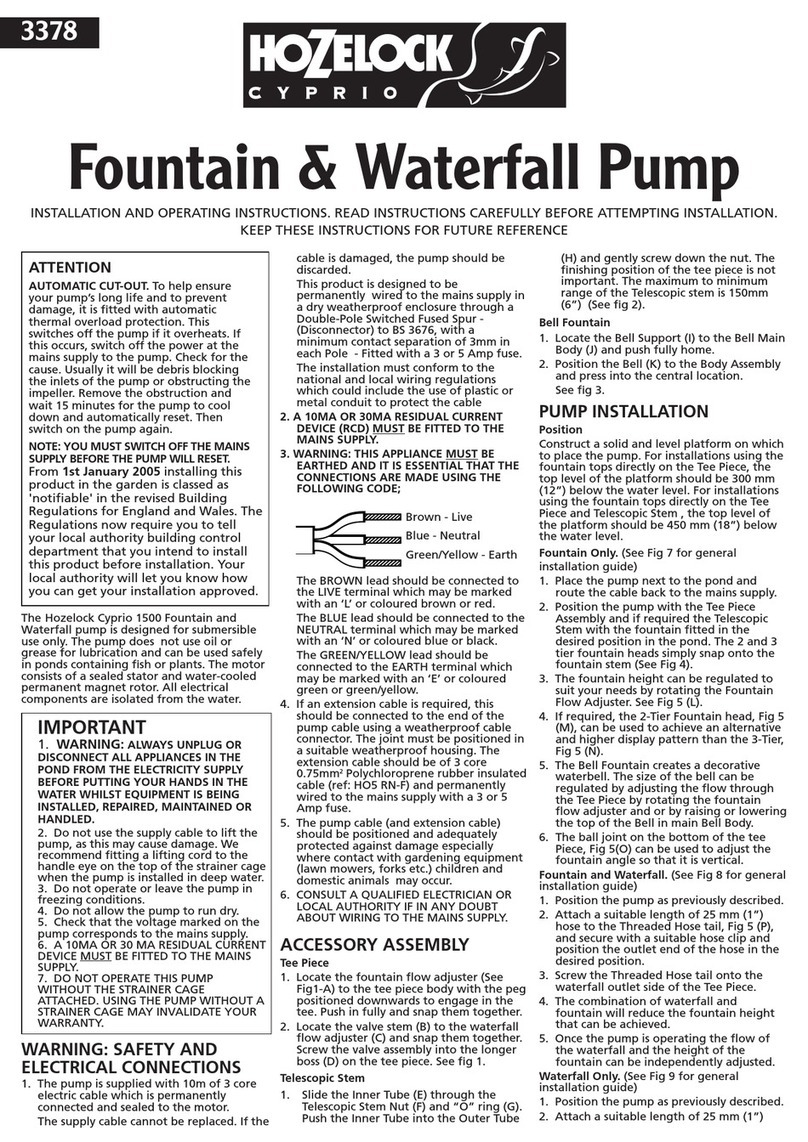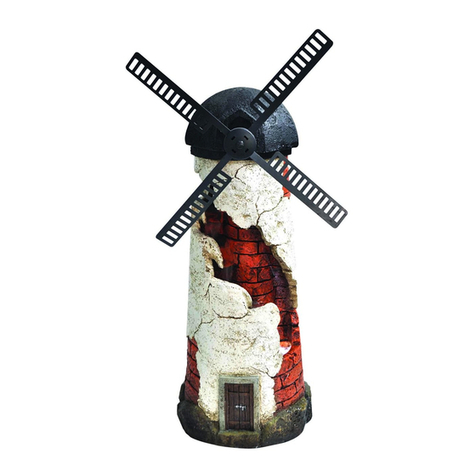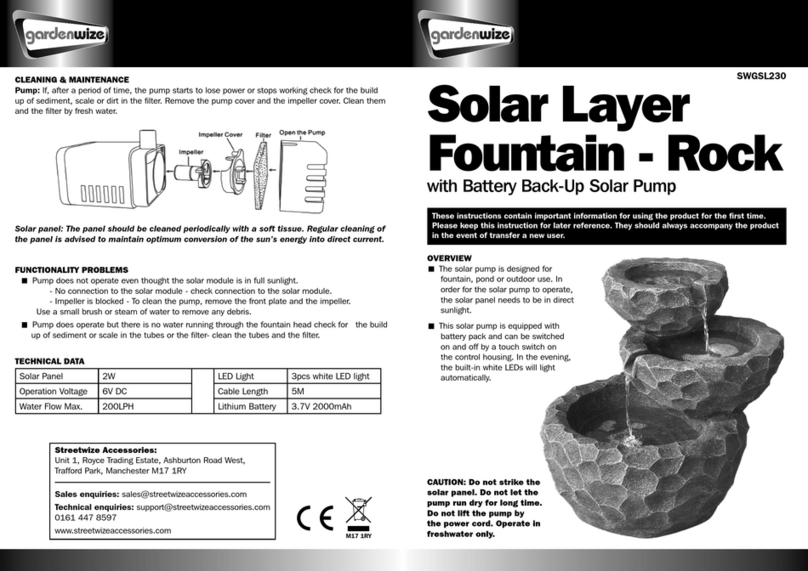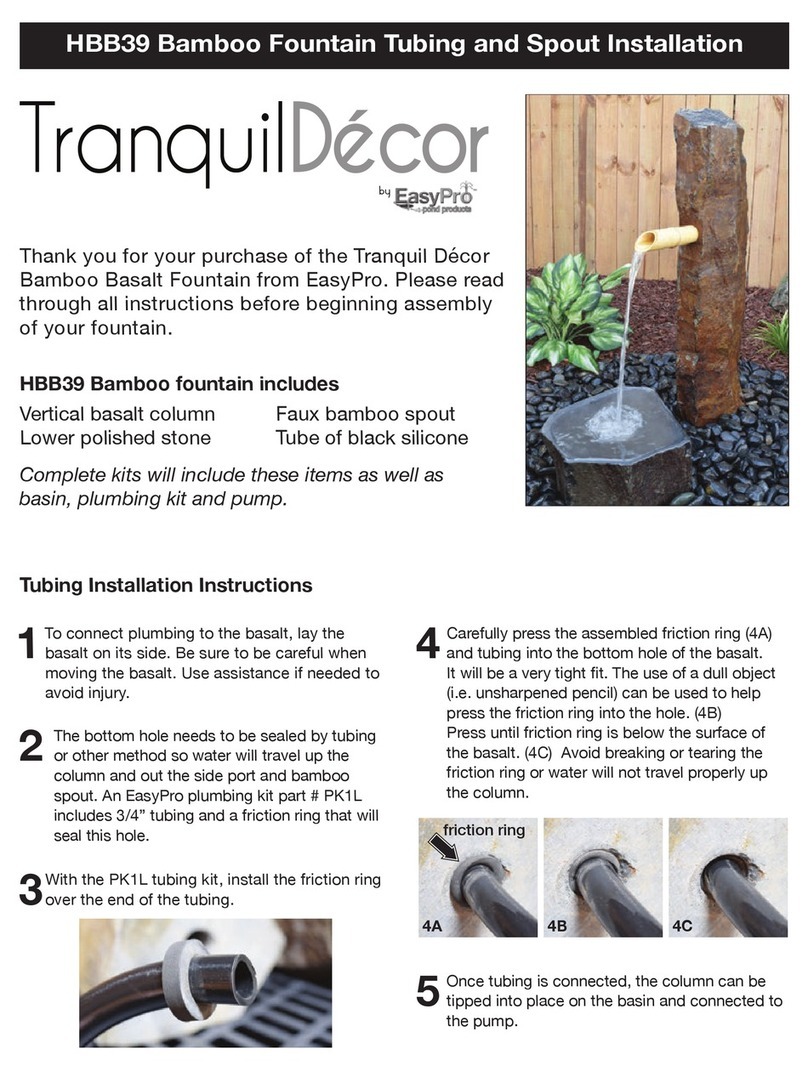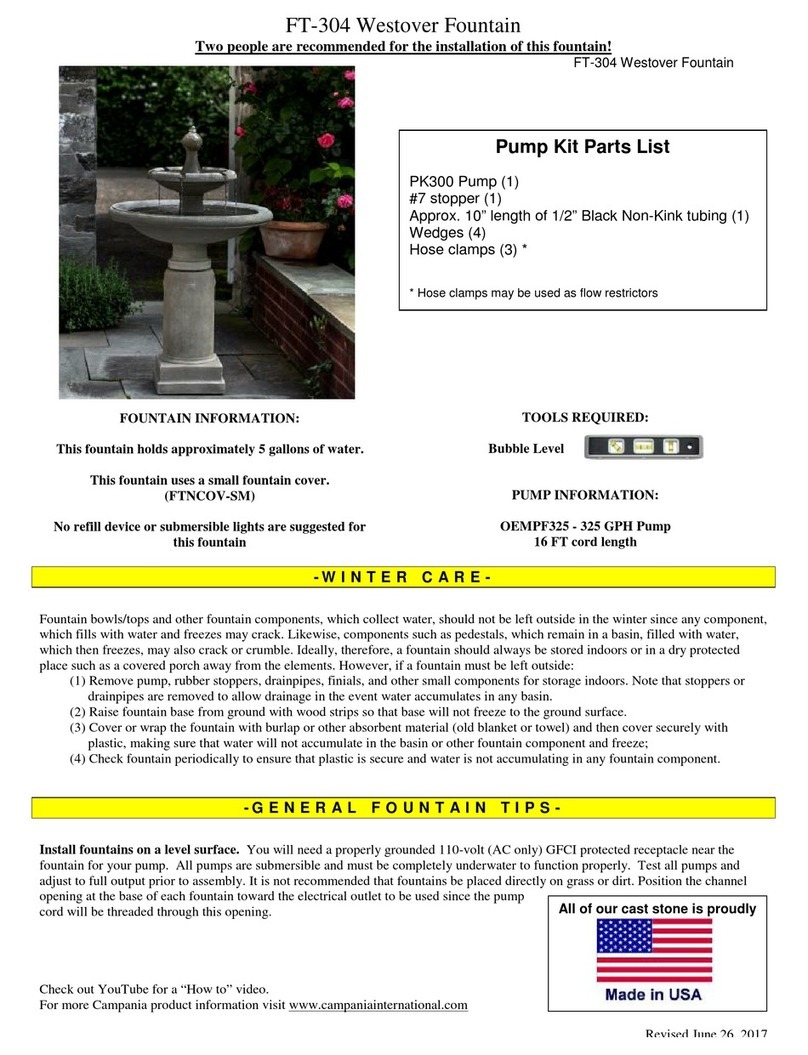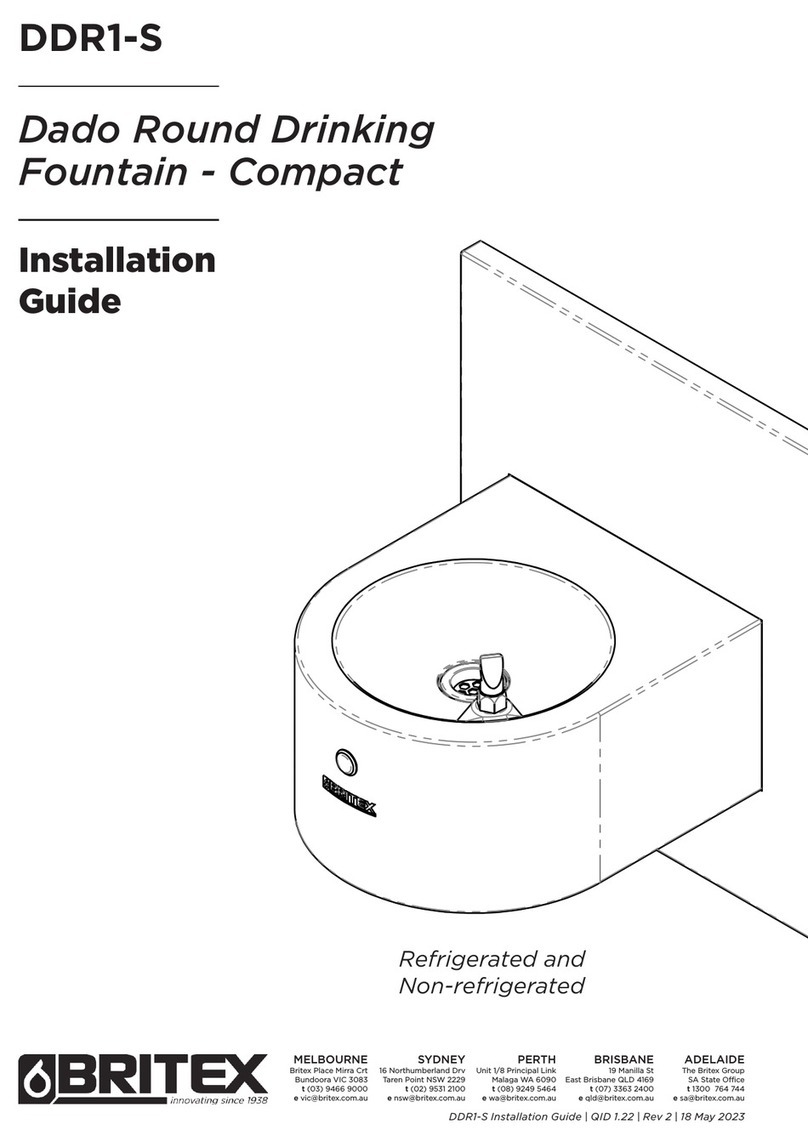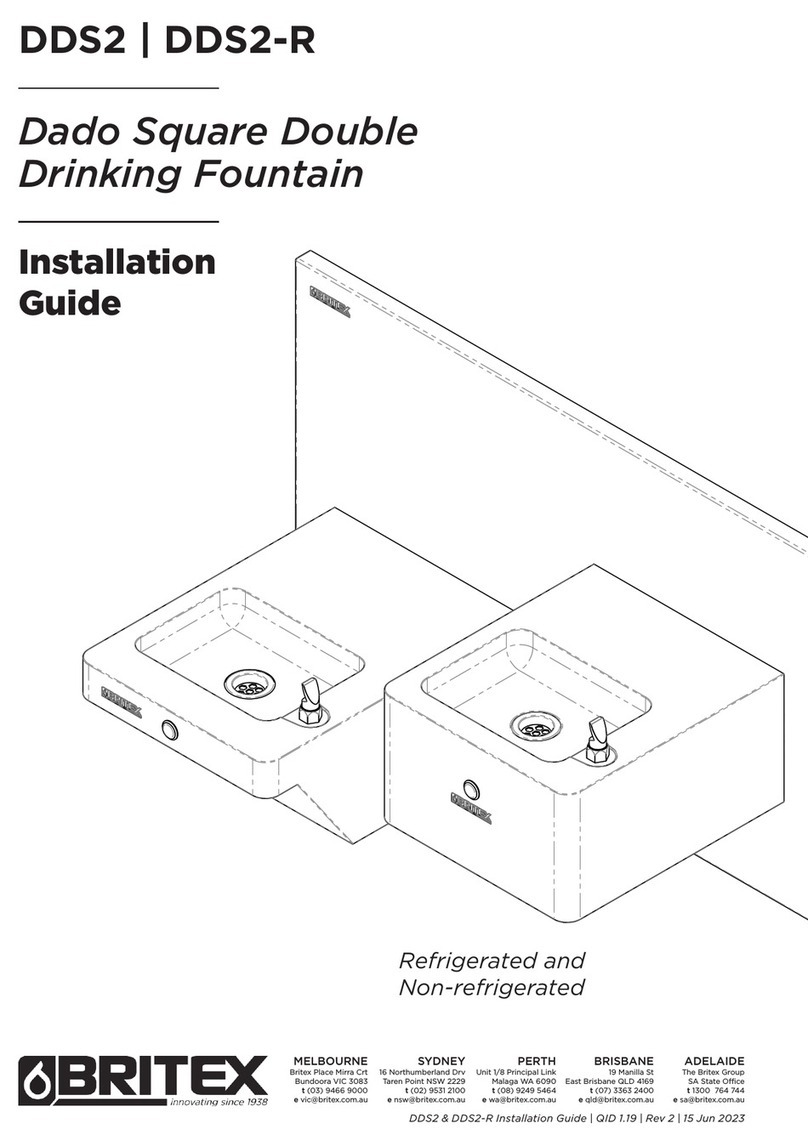
Australia’s Finest Stainless | britex.com.au
8
Care and Maintenance
Cleaning: The coil at the front of the unit
and the vents on the side must be kept clean
from dust and lint. Regular checks of the unit
should be conducted on a weekly basis and
cleaning carried out as necessary by dusting
with a soft brush and/or vacuuming. A damp
cloth can be used to wipe the exterior cover
down. Excessive build up of foreign material
will result in poor ventilation, causing the
compressor to overheat and drinking water
to increase in temperature. High pressure
hoses and water jets should never be used to
clean chiller units.
Stainless steel products should be
kept clean at all times. The secret to
stainless steel’s ability to maintain a high
quality finish and promises of a long life
expectancy is the invisible chromium-oxide
film that sits on the surface and protects
the steel beneath. To maintain this film it
is essential that the surface remains clean
and in constant contact with oxygen. If
this film is penetrated (either by abrasion
or chemically) and dirt, liquid, grime
contaminants embed themselves in these
micro chasms for an extended period of
time, the chromiumoxide film will not be
able to regenerate and the steel below
will eventually become damaged and
discoloured.
What we recommend for general cleaning
and maintenance:
Cleaning Materials:
• A soft cloth
• A soft-bristled brush
• A natural or artificial sponge
Cleaning Solutions:
• Hand washing soap / soft water solution
• Mild soap / soft water solution
• White vinegar / soft water solution
It is recommended that general cleaning
of stainless steel surfaces be carried out
weekly, or as soon as a build up of surface
media has been observed. To clean, simply
wash stainless steel surfaces with, warm,
diluted, mild soapy water using a cloth or
soft bristled brush. Once all dirt, oil and
grime is removed, rinse thoroughly with
clean water and wipe dry.
Do NOT – use a metal brush or steel wool to
clean stainless steel. Ever. These tools will
scratch the surface as well as potentially
leave behind steel fragments that can go
rusty and cause the stainless to discolour.
Using these materials will void the warranty.
Do NOT – use scourers of any kind that
have previously been used on ordinary
steel. Microscopic steel fibers transferred
onto stainless steel can cause considerable
damage to the surface and will void the
warranty.
Do NOT – use abrasive cleaning brushes,
pads or agents on highly polished finishes
Do NOT use harsh cleaners that contain
powerful acidic or alkaline chemicals such
as hydrochloric acid and sodium hydroxide
that will damage the surface. Any water
coming into contact with stainless steel,
particularly cleaning solutions, should
have zero chloride content as even minute
amounts can cause damage. Using these
cleaners will void any product warranty.
Do NOT – use chlorinated sanitizers,
cleansers or bleach of any kind. Using these
substances will void the warranty. Despite
some cleaners displaying the text, ‘Suitable
for Toilets and Urinals’ this is more likely
in reference to ceramic/vitreous China
products and use of these cleaners can
damage stainless steel and will void the
warranty.
Do NOT – use brick cleaning liquids that
contain hydrochloric acid anywhere near
stainless. If cement needs to be removed from
stainless (before it sets), a mixture of hot
water and 25% vinegar or 10% phosphoric
acid can be effective. Once cleaned, the
surface should then be neutralised with
dilute ammonia or sodium bicarbonate then
rinsed and dried
DSR & DSRR Installation Guide | QID 1.8 | Rev 3 | 18 May 2023
